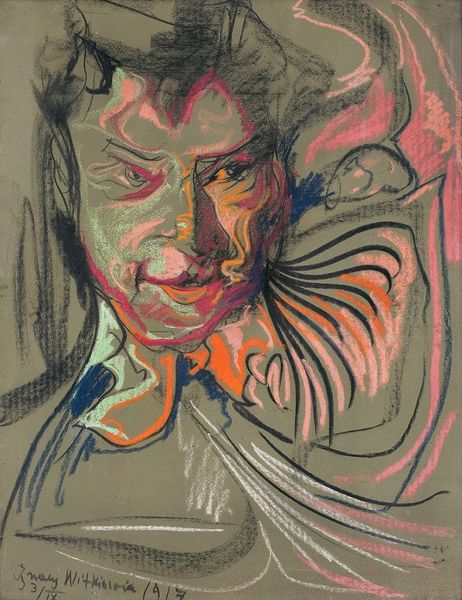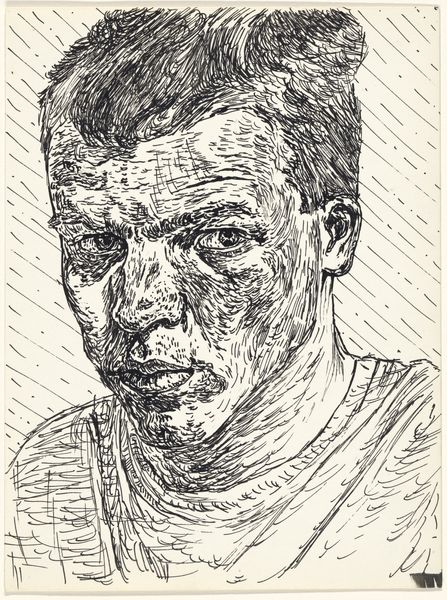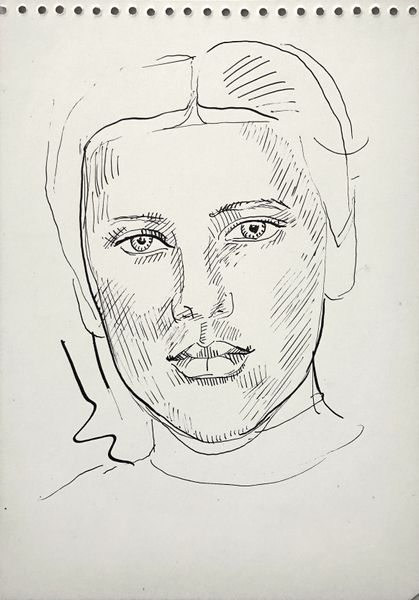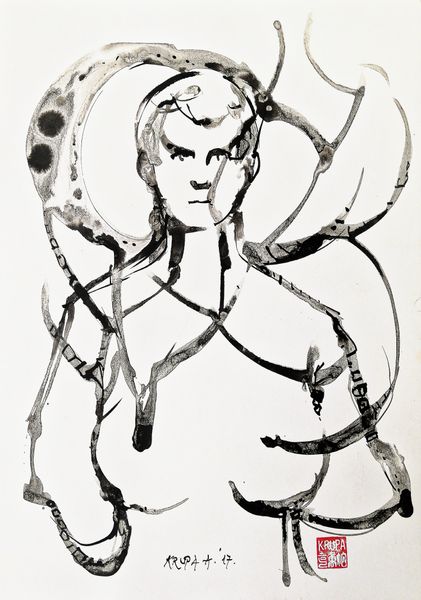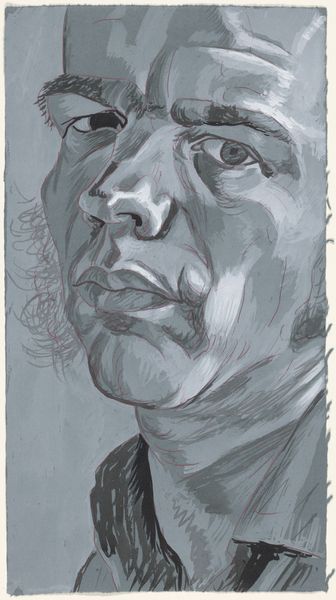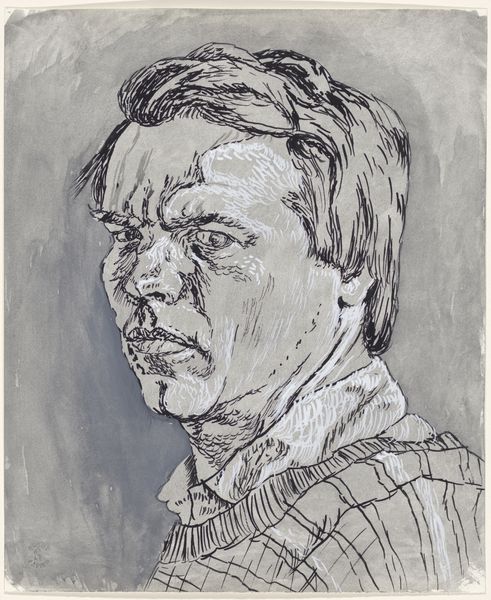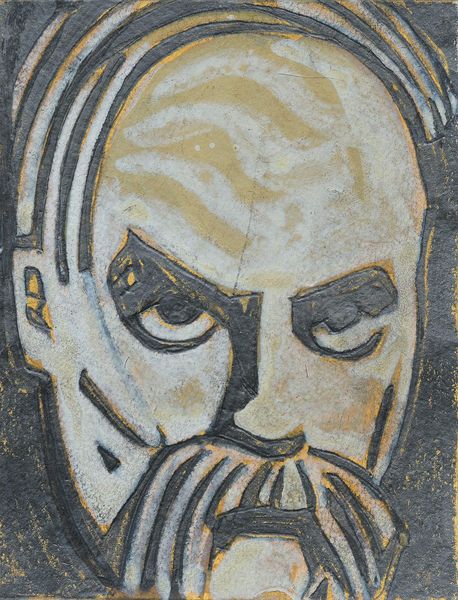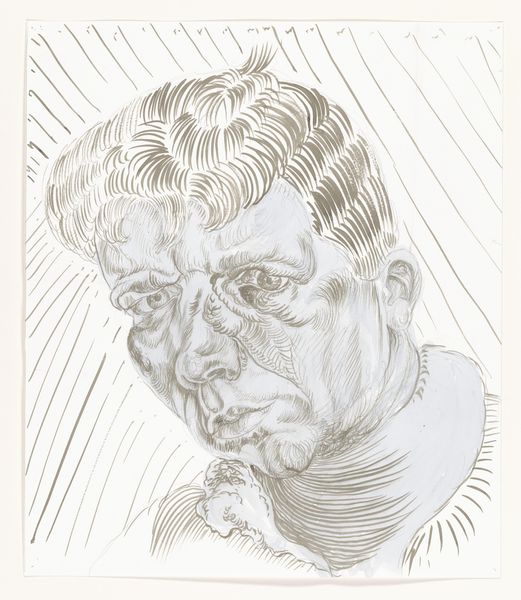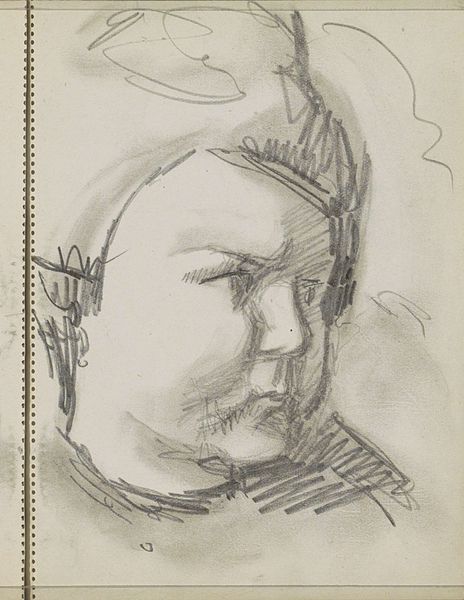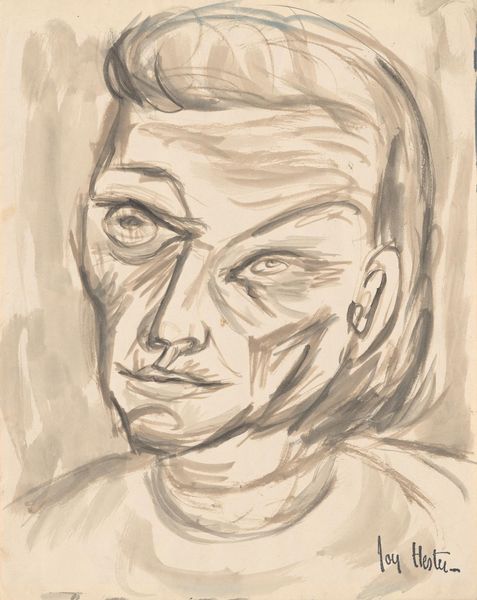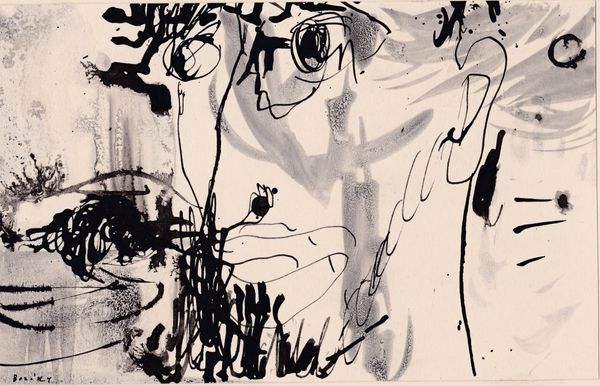
drawing, ink
#
portrait
#
drawing
#
caricature
#
caricature
#
figuration
#
ink
#
portrait drawing
Dimensions: 42 x 31 cm
Copyright: Creative Commons NonCommercial
Curator: Here we have Alfred Freddy Krupa’s “Red-eyed,” an ink drawing created in 1993. Editor: My initial reaction is…intense. The stark contrast of the dark ink and the piercing red eyes really grabs your attention. It has a raw, almost unsettling energy. Curator: Yes, Krupa’s style at this time was certainly direct, even confrontational. The caricature exaggerates features to convey a mood, perhaps social commentary. There’s an otherworldly quality too. Notice the unusual object centered on the figure’s forehead. Editor: I'm more drawn to how those bold, confident lines were made. Look at the density of the ink wash in the background, setting off the figure who seems built of quickly, almost nervously scratched marks. It’s fascinating to think about the artist's process, the movement of hand and the resistance of the paper. What kind of ink did he use? How does that affect the permanence of the work? Curator: Considering the historical context, Croatia in the early nineties was facing significant upheaval. Perhaps this unnerving imagery is an expression of anxiety, a reflection of a society under stress. The red eyes become symbolic of conflict, or even inner turmoil. The almost crown-like emblem is reminiscent of Eastern symbols—a comment perhaps on religious divisions and power. Editor: It's interesting how a simple material like ink can carry so much weight. You start to think about the labour involved in making ink, historically, and even the accessibility of materials depending on the sociopolitical landscape at the time of production. Even the size of the paper—was that the standard, most readily available size? Curator: Absolutely, understanding these constraints helps contextualise the artist's choices, revealing narratives that resonate beyond the individual portrait. It prompts us to think about how wider societal problems shaped not just subject matter, but creative vision itself. Editor: Seeing how material, process, and even the gesture is indelibly shaped by conflict encourages me to look past the surface of an art object and consider the humanity, and hardship, infused into even seemingly simple art making. Curator: Precisely. Hopefully this portrait opens conversations about the interplay of art, politics, and the human condition in times of profound transformation.
Comments
No comments
Be the first to comment and join the conversation on the ultimate creative platform.
